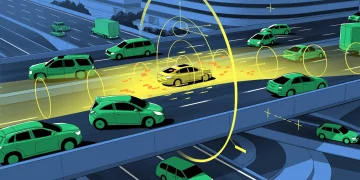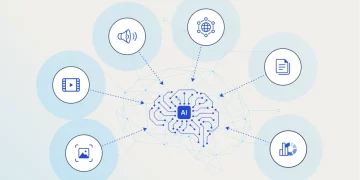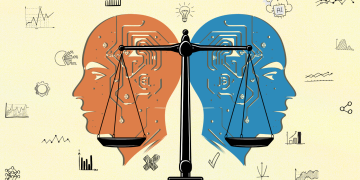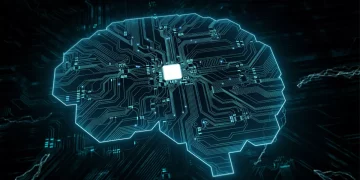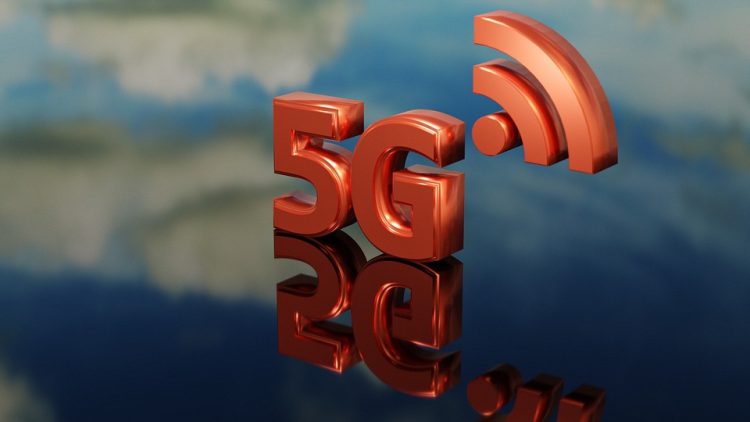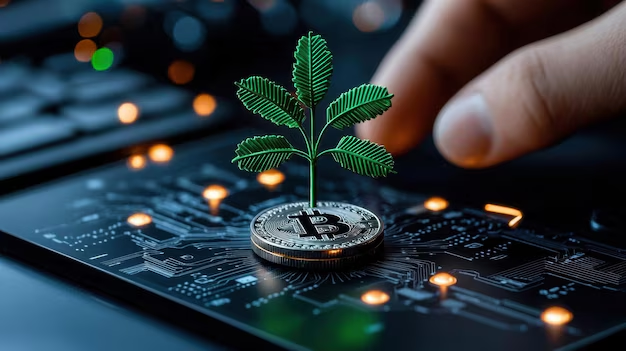Introduction:
The rollout of 5G technology is one of the most significant technological shifts the world has seen in recent years. This next-generation wireless communication system promises to dramatically increase the speed, connectivity, and reliability of mobile networks. Unlike previous generations (4G, 3G), which focused primarily on improving download speeds and user experiences for smartphones, 5G introduces a wide range of capabilities that extend far beyond mobile communications, potentially transforming entire industries and reshaping the global internet infrastructure.
5G promises to enable faster data transmission, lower latency, greater capacity, and more reliable connections. These improvements are expected to have wide-ranging effects, from revolutionizing how individuals and businesses access and use the internet to laying the groundwork for the development of new technologies such as autonomous vehicles, smart cities, and the Internet of Things (IoT).
This article will explore how the widespread adoption of 5G technology will change the global internet infrastructure, focusing on its implications for connectivity, data usage, industries, and the overall architecture of the internet.
1. Understanding 5G: Key Features and Advantages
Before diving into the impact 5G will have on internet infrastructure, it is essential to understand the key features and advantages that set 5G apart from previous generations of mobile networks.
1.1. Speed and Data Throughput
5G networks promise to deliver download speeds of up to 20 Gbps (gigabits per second), a significant leap compared to the 1 Gbps provided by 4G. This speed increase means that downloading large files, streaming ultra-high-definition videos, or accessing content in real-time will be nearly instantaneous, even in high-density areas.
1.2. Low Latency
One of the standout features of 5G is its ultra-low latency, with response times as low as 1 millisecond, compared to the 30-50 milliseconds in 4G. This reduced latency is crucial for applications that require near-instantaneous data transmission, such as virtual reality (VR), augmented reality (AR), and autonomous vehicles, where delays of even milliseconds can have serious consequences.
1.3. Higher Capacity and Device Density
5G networks will be able to support up to 1 million devices per square kilometer, an exponential increase compared to 4G’s capacity of around 100,000 devices per square kilometer. This high capacity is vital for supporting the massive growth of the Internet of Things (IoT), where billions of interconnected devices (such as smart home appliances, sensors, and wearable tech) will be communicating simultaneously.
1.4. Enhanced Reliability and Connectivity
5G networks are designed to be more reliable, with better coverage in both urban and rural areas. They are also designed to maintain a strong signal in challenging environments, such as deep indoor spaces, remote regions, or crowded areas. This enhanced reliability will help bridge the digital divide, providing better internet access to underserved regions of the world.
2. Impact of 5G on Global Internet Infrastructure
As 5G technology is deployed around the world, it will have a profound impact on the global internet infrastructure, influencing everything from network architecture to the development of new services and applications. Below are some of the key ways 5G will transform the internet infrastructure:
2.1. Transformation of Network Architecture
To support the speed, capacity, and low latency requirements of 5G, the internet infrastructure will undergo a fundamental shift in its architecture. A significant change will be the shift to a more distributed network design.
5G will rely on small cell networks, which are low-power, compact base stations placed in dense urban environments or along highways, ensuring coverage in areas where traditional cell towers might struggle. Unlike traditional cellular towers, which are large and few in number, small cells can be deployed more densely and cost-effectively.
These small cell networks will create a more heterogeneous network (HetNet), which is a mix of different types of network elements, such as traditional cellular towers, small cells, Wi-Fi networks, and even satellites. This decentralization of infrastructure will improve coverage and network flexibility, allowing for better service in high-demand areas and more efficient use of available bandwidth.
Additionally, edge computing will become a more integral part of 5G networks. Rather than relying on distant data centers, edge computing allows data to be processed closer to the source (at the edge of the network), minimizing latency and optimizing network performance. By reducing the need for long-distance data transmission, edge computing will help improve the efficiency of services relying on real-time data processing, such as autonomous driving, smart cities, and IoT applications.
2.2. Improved Global Connectivity and Bridging the Digital Divide
One of the most significant impacts of 5G will be its ability to enhance global connectivity, especially in remote and underserved regions. By offering faster speeds and more reliable connections, 5G will help improve internet access in areas where broadband infrastructure is limited or non-existent.
In developing countries or rural areas, 5G networks can be deployed more efficiently than traditional fiber-optic or copper networks, which require extensive physical infrastructure. Small cell technology can provide high-speed internet access in areas that would be costly or impractical to reach using traditional methods. This could help bridge the digital divide by enabling people in remote areas to access essential services like education, healthcare, and financial services, all of which require reliable internet access.
2.3. Massive Growth of IoT
The adoption of 5G will fuel the growth of the Internet of Things (IoT), where billions of interconnected devices will communicate with each other seamlessly. As 5G networks offer higher capacity and faster speeds, it will be possible to support a much higher density of devices that are continuously sending and receiving data.
In particular, 5G’s low latency and ability to handle massive amounts of simultaneous connections will enable applications that require real-time data exchange, such as:
- Smart cities: 5G will power the next generation of smart cities, where everything from traffic lights to energy grids to waste management systems are interconnected and monitored in real-time.
- Autonomous vehicles: 5G’s low latency will allow vehicles to communicate with each other and with infrastructure in real-time, improving safety and paving the way for fully autonomous transportation.
- Wearables: 5G will support the growing market of wearable devices, from smartwatches to health monitors, all of which require high-bandwidth, real-time communication.
The massive growth of IoT will place significant pressure on existing internet infrastructure, requiring more robust networks to handle the increased data traffic. As a result, 5G networks will need to be complemented by other innovations, such as edge computing and low-power wide-area networks (LPWANs), to effectively manage the sheer volume of data being generated by connected devices.
2.4. Increased Demand for Data Centers and Cloud Services
With the increased data traffic generated by IoT devices and the proliferation of data-intensive services, the demand for data centers and cloud services will skyrocket. To handle this data explosion, cloud computing platforms will need to expand their capacity, and new data centers will be deployed closer to end-users.
The combination of 5G networks and edge computing will enable distributed cloud infrastructure, where data is processed and stored at multiple points around the globe, rather than being concentrated in a few large data centers. This distributed model will improve the responsiveness of cloud-based applications and provide more efficient data management for consumers and businesses.
2.5. Revolutionizing Digital Services
The impact of 5G on the internet infrastructure will also enable a broad range of new services and applications that were previously impractical or impossible with older network technologies. These innovations will shape the future of industries such as:
- Healthcare: Telemedicine and remote surgeries, powered by 5G’s high bandwidth and low latency, will enable doctors to perform real-time diagnostic procedures and surgeries remotely, improving access to healthcare in underserved areas.
- Entertainment and Media: Streaming services, especially those offering ultra-high-definition (4K and 8K) video content, will benefit from the higher speeds and reduced buffering times offered by 5G networks, allowing users to enjoy high-quality content on-demand.
- Gaming: The low latency and high speeds of 5G will make cloud gaming more viable, allowing users to play high-quality video games without needing powerful local hardware.
- Augmented and Virtual Reality: 5G will facilitate the seamless integration of AR and VR technologies into everyday life, whether for entertainment, education, or training.

3. Challenges to the Widespread Adoption of 5G
While 5G holds enormous potential, several challenges must be overcome for it to be fully realized across the globe. These include:
3.1. Infrastructure Costs
Deploying 5G networks, especially small cell infrastructure, will require significant investment. While some regions will benefit from upgrades to existing network infrastructure, other areas will need entirely new networks. Governments and private companies will need to collaborate to fund these initiatives.
3.2. Regulatory and Policy Challenges
The rollout of 5G is also hindered by regulatory challenges, including spectrum allocation, licensing, and coordination between different governments and industries. Governments will need to establish clear regulatory frameworks to ensure that 5G deployment is efficient, equitable, and secure.
3.3. Security Concerns
With the increased connectivity and reliance on IoT devices, the security risks associated with 5G networks will need to be addressed. More robust cybersecurity measures will be required to protect against potential threats, such as data breaches, network intrusions, and cyberattacks.
Conclusion:
The widespread adoption of 5G technology will undoubtedly have a transformative impact on the global internet infrastructure. By enabling faster speeds, lower latency, higher capacity, and more reliable connections, 5G will pave the way for innovations in IoT, cloud computing, smart cities, healthcare, and entertainment.
As 5G technology continues to be deployed, it will reshape how we connect to the internet and interact with digital services, making the internet faster, more accessible, and more efficient. However, achieving the full potential of 5G will require overcoming significant challenges, including infrastructure costs, regulatory hurdles, and security concerns. As these challenges are addressed, the world will see a profound shift in the way the internet functions, making 5G a key enabler of the digital future.



